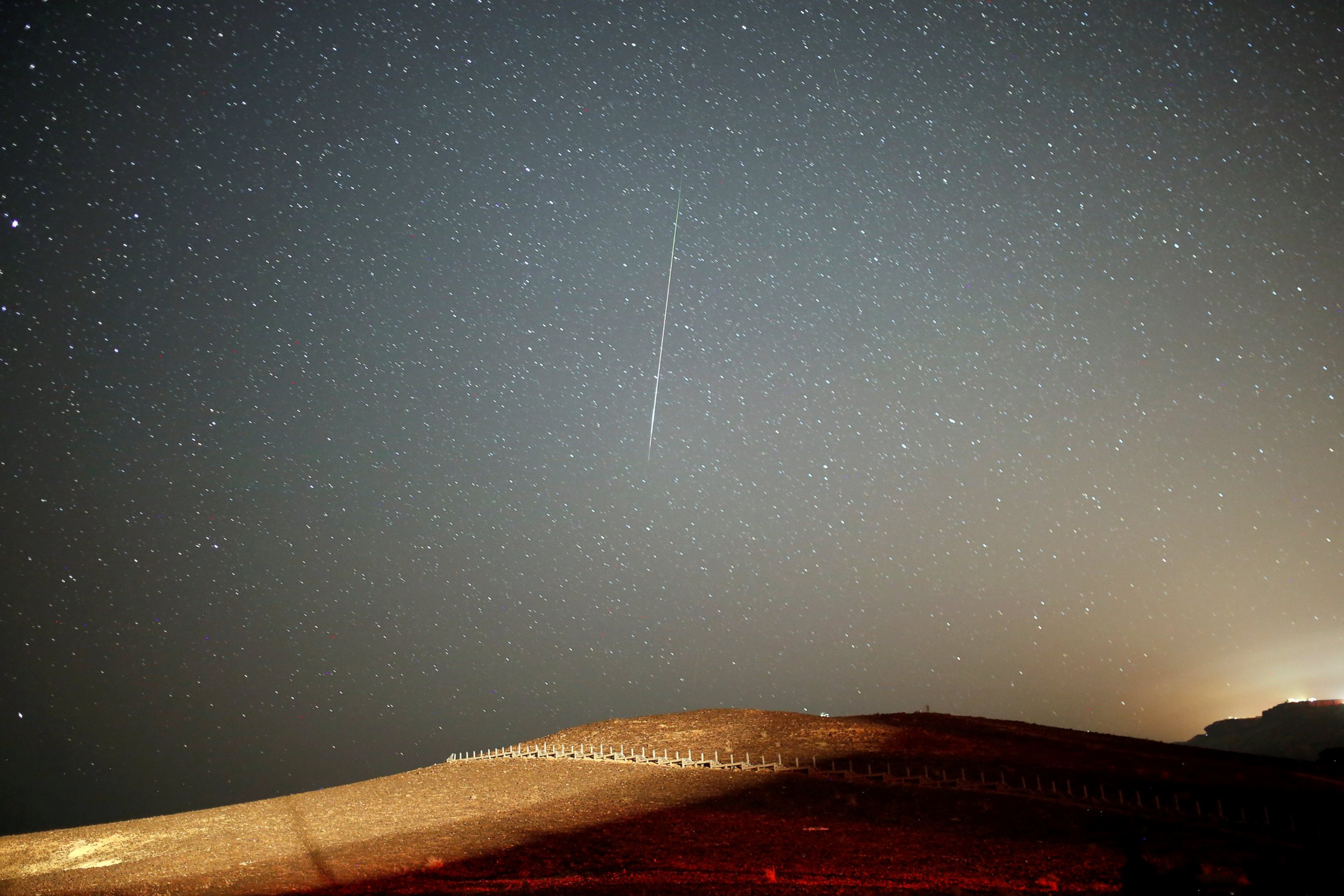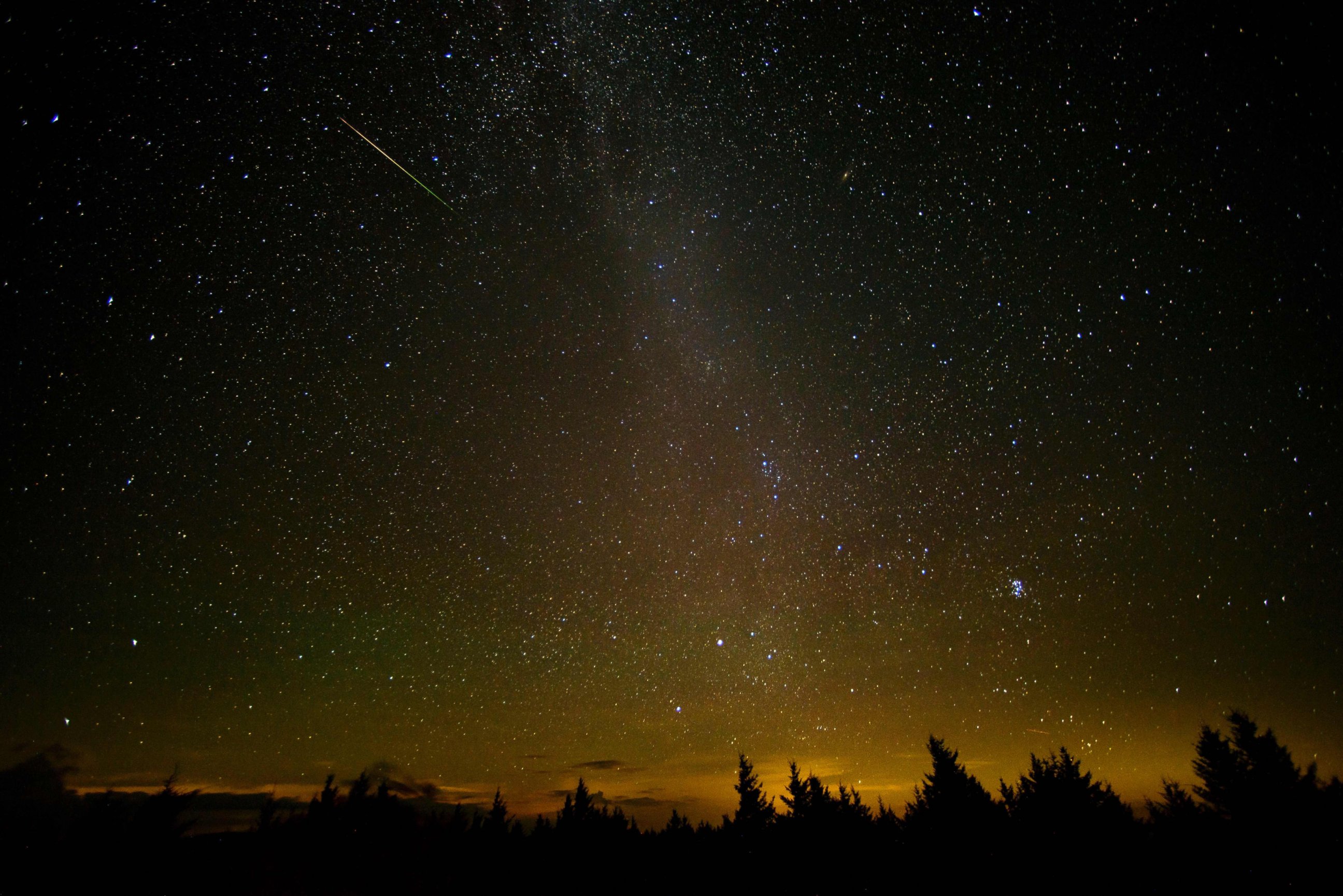Perseid Meteor Shower Peak Creates Cosmic Display of Light Against Night Sky
The "shooting stars" travel up to 132,000 mph, according to NASA.
— -- The Perseid meteor shower put up on a beautiful show overnight when it peaked with as many as 200 meteors per hour flying through the night sky.
The "shooting stars" create an annual cosmic display every August when the Earth ventures through trails of debris left behind by the ancient comet Swift-Tuttle. When the Swift-Tuttle's dust disintegrates, it creates the gorgeous bright streaks that light up the sky.
"Here’s something to think about: The meteors you’ll see this year are from comet flybys that occurred hundreds if not thousands of years ago," said Bill Cooke with NASA's Meteoroid Environments Office in a news release. "And they’ve traveled billions of miles before their kamikaze run into Earth’s atmosphere."
Perseid meteors travel at the incredible speed of 132,000 mph -- 500 times faster than the world's fastest car, according to NASA.

Peak temperatures can reach anywhere from 3,000 to 10,000 degrees Fahrenheit as they speed across the sky, NASA said.
Despite the their blistering speeds and heat, the Perseids pose no danger to Earth, NASA said. Most meteors burn up 50 miles above Earth.

For stargazers who may have missed the shower's peak overnight, or for those who living under cloudy or light-polluted skies, a live broadcast by NASA will be available online tonight at 10 p.m. EDT.




